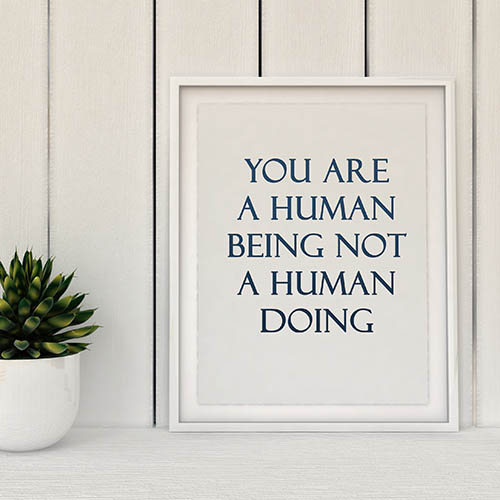Author
Rudolph Victor Nieblas
Share
In today’s work environments, whether remotely or on-site, encouraging or incorporating mindfulness and meditation as a regular daily routine can be a powerful advantage and a wise investment for any company, no matter the size. Mindfulness and meditation reduce stress, improve communication, and enhance decision-making skills; mindfulness for employees increases productivity and employee well-being. This translates into lower absenteeism, improved retention rates, and a healthier bottom line. Companies that encourage mental fitness reap the benefits of a more engaged, collaborative, and innovative workplace.
Benefits for Employees
Stress Reduction: Mindfulness techniques are designed to break negative thought cycles and teach practitioners to observe stress without internalizing it, which leads to lower stress and anxiety levels.
Improved Focus and Concentration: Meditation trains the mind to stay present. This enhanced focus makes multitasking easier, minimizes distractions, and promotes more efficient work.
Increased Emotional Regulation: Mindfulness helps people recognize, process, and respond to emotions in a healthy way. This leads to better conflict resolution skills and overall emotional well-being.
Boosted Creativity: A mind less cluttered by stress is free to explore ideas. Meditation and mindfulness can foster enhanced creative thinking and innovative problem-solving.
Greater Self-Awareness: Mindfulness enhances the ability to recognize thought patterns and behaviors. This awareness empowers better decision-making, leading to greater efficiency.
Improved Physical Health: Mindfulness practice has been associated with lowering blood pressure, improving sleep quality, and amplifying the immune response.
Benefits for the Workplace
Higher Productivity: Less stress, stronger focus, and improved mental clarity all contribute to increased workplace productivity.
Reduced Absenteeism: Healthier employees physically and mentally tend to take fewer sick days.
Enhanced Collaboration and Communication: Mindfulness fosters greater emotional intelligence and empathy, which are crucial for a positive and collaborative work environment.
Better Decision-Making: Mindful employees are less likely to make choices impulsively or out of emotional reactivity, leading to sounder decisions.
Increased Employee Satisfaction and Retention: Companies that invest in employee well-being often see higher morale, better job satisfaction, and lower turnover rates.
5 Steps to introduce mindfulness and meditation in the workplace.
1. Start with Information & Education:
Share the Benefits: Educate employees about the science-backed benefits of mindfulness. Present it as a tool for well-being and performance enhancement.
Address Misconceptions: Some people may associate meditation with religion or find it intimidating. Dispel these notions and explain mindfulness as a mental exercise for focus and clarity.
2. Offer Options and Flexibility:
Variety is Key: Offer different techniques, such as guided meditation, body scans, and mindful breathing exercises. Some employees may resonate more with one style than another.
Choose Your Timing: Provide options like short sessions at the start and end of the workday, during breaks, or even “mindful moments” woven throughout the day.
3. Create Supportive Spaces
Designated Quiet Space: If possible, provide a quiet room or corner where employees can find a few minutes of peace for practice.
If space is limited, Encourage using headphones at desks for guided practice or share resources for practicing mindfulness outdoors during a break.
4. Start Small and Build Gradually
Bite-Sized Sessions: Begin with 5-10 minute guided meditations to make it accessible and unintimidating. Gradually increase the duration as interest grows.
Optional Participation: Make these offerings voluntary. Forcing them can create resistance. The goal is to provide benefits and let people see the value.
Encourage Ongoing Support
Mindfulness Resources: Provide links to apps, websites, or books on mindfulness to help employees explore practices independently.
Follow-ups and Workshops: Occasional workshops or refresher sessions led by a qualified instructor can sustain enthusiasm and deepen practice.
Important Note: Introducing mindfulness and meditation should be done thoughtfully and respectfully. Emphasize that these practices are for everyone and are focused on improving focus, clarity, and well-being—they are not tied to any particular belief system.
Useful Resources
Harvard Business Review: Features articles discussing the benefits of mindfulness for businesses, including research findings: “Mindfulness Can Literally Change Your Brain”: https://hbr.org/2015/01/mindfulness-can-literally-change-your-brain
National Institutes of Health (NIH) – National Center for Complementary and Integrative Health (NCCIH): Provides information and research on mindfulness, including its use in the workplace: https://www.nccih.nih.gov/health/meditation-in-depth
American Psychological Association (APA): Offers resources on the science behind mindfulness and its benefits: https://www.apa.org/topics/mindfulness
Scientific Journals: You can find published studies specifically focused on mindfulness in the workplace on reputable journals like:
Mindfulness (Springer): https://www.springer.com/journal/12671






